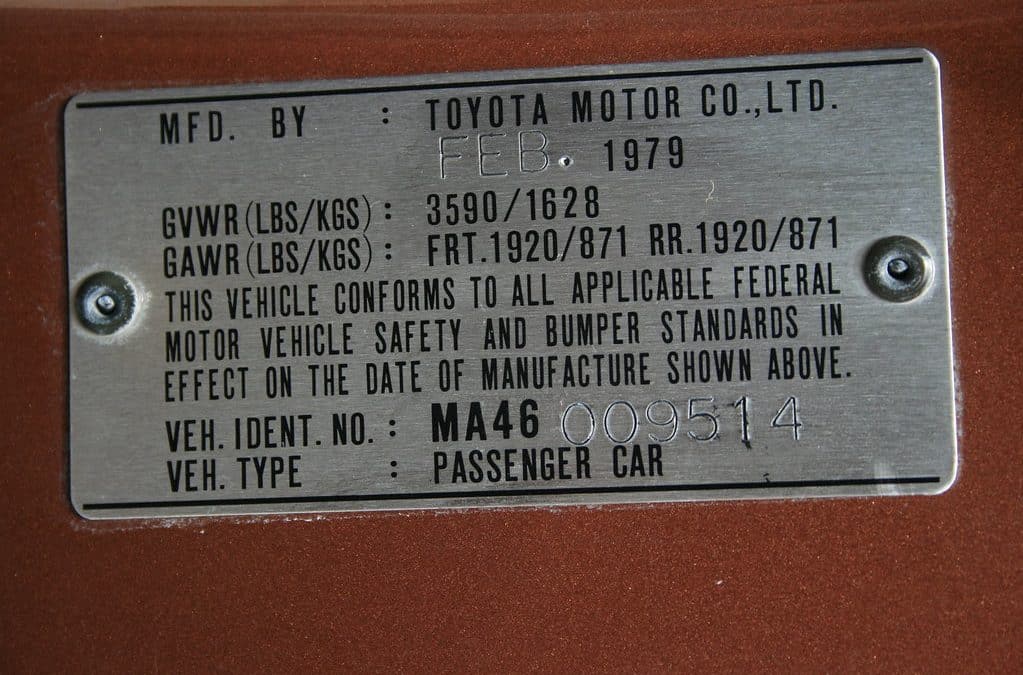Your car’s vehicle identification number (VIN) is like its DNA: It’s unique to that particular vehicle and no other. You can find your car’s VIN on the dash, and driver’s side, see this post. The VIN is composed of 17 characters (digits and capital letters) that provide information about your car. Each character in the VIN number has a specific meaning.
You can use this information to figure out everything from the year your car was made to what engine it has under the hood. You may also need your car’s VIN if you’re ever in an accident or if you need to get a recall fixed. It can also prevent theft and fraud. Knowing how to identify your car’s VIN can come in handy in a number of situations. So take a look at your dash and learn where to find this important piece of information.
How To Read A VIN
Your VIN contains a wealth of information about your car. Here’s how to follow each section of the VIN, what information it provides, and how to read it. The VIN of a 1996 Porsche 993 GT2 — WP0ZZZ99ZTS392124 — is going to be an example.
- Characters 1-3
The first three characters, called the World Manufacturer Identifier, show the vehicle’s manufacturer and the region where it was made. In the above example, the W designates the vehicle was made in Germany, while P0 identifies it as a Porsche.
- Characters 4-9
The following six characters are collectively called the Vehicle Descriptor Section and provide a lot of information about the car. Every manufacturer uses its own system for this segment, but it will usually include the vehicle’s weight, platform, model, trim, engine size, and horsepower.
- Characters 10-17
The next eight characters are called the Vehicle Identifier Section. The manufacturer uses it to identify that particular vehicle. Notably, every manufacturer uses the 10th digit to identify the model year, according to the chart below. If the character in position 7 is numeric, the model year is 1980-2009. If it’s alphabetic, the model year is 2010-2039. The 7th character in our example is “9,” and the 10th character is “T,” which makes our car’s model year 1996.
How To Identify Your VIN
Now that you can read your VIN it’s important to go over how to find it on your vehicle. Here’s what you need to know about the process:
- On The Car
There are multiple locations on your car where you might find the VIN. The most common is on the lower right corner of the dashboard in front of the steering wheel. You should be able to read it from outside the car by looking through the windshield on the driver’s side. Here are a few other possible places you can find the VIN:
- Engine Block — Pop the hood and look toward the front of the engine block.
- Front of the Frame — Look near the container that holds your wiper fluid.
- Rear-Wheel Well — There’s going to be an easier way to find the VIN than this, but you can sometimes find it above the tire in your rear-wheel wells.
- Driver’s Side Door Post — If you open the driver’s side door and look toward the vehicle’s rear, you should find the VIN and other information about your car.
On Paper
Some documents that will contain your VIN are:
- Title
- Registration
- Insurance Documents
- Service Documents
If you’ve got your car or any of these documents nearby, finding your VIN should be a breeze. Knowing how to read a VIN unlocks a ton of information about a vehicle. For example, you can determine whether a car has been in an accident before you buy it. Not to mention, if your vehicle is ever lost or stolen, law enforcement will have an easy way to identify and recover it.

